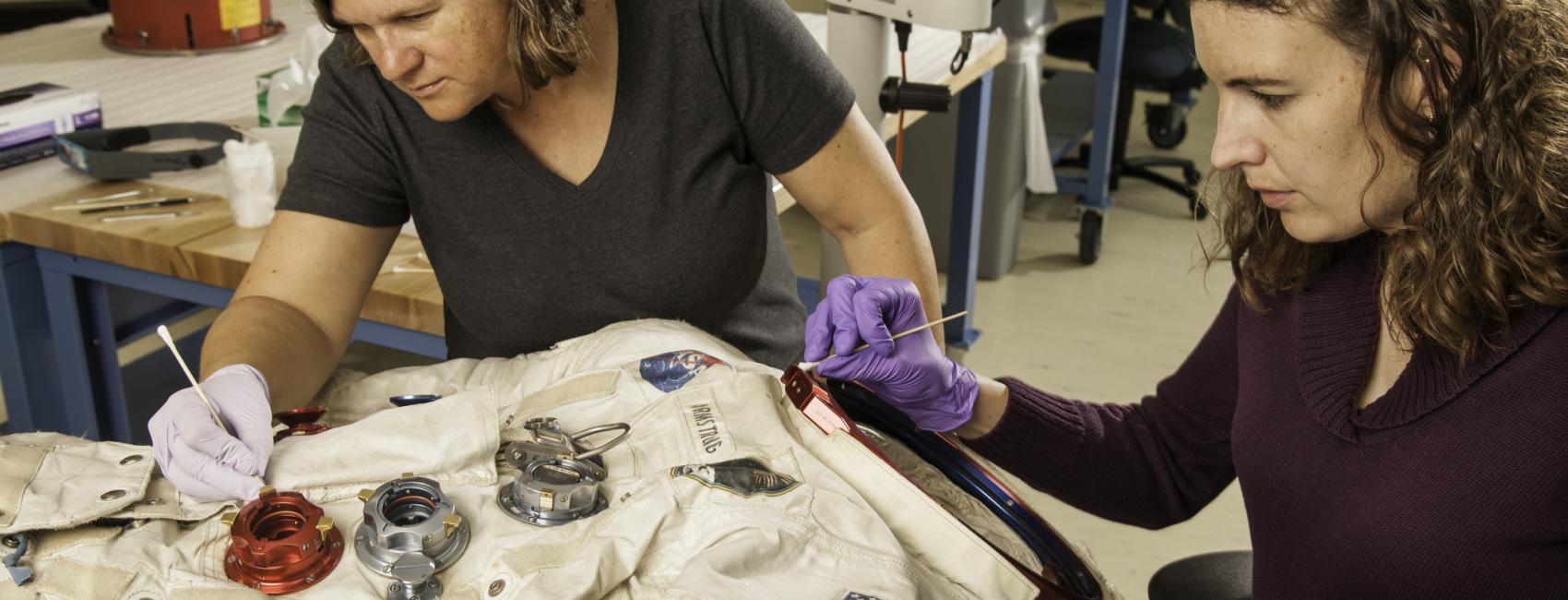
Nov 16, 2014
Of all the parts of a spacesuit, the gloves are the most difficult to make. They must allow for the “right amount of dexterity and a sense of touch to work with tools," says Cathleen Lewis, Museum spacesuit curator. "They also need to be protective as well—so it's a careful balance." Early spacesuits were custom-made, the gloves especially so. Part of the process of making intra-vehicular and extra-vehicular gloves for the Apollo program was creating an interior pressure bladder. They did this by making a cast of the astronaut's hands in a neutral position, placing a nylon glove over each form, and then dipping them into a rubber/neoprene compound. The black, hard rubber hand shapes below are molds made from Gus Grissom’s hand casts used in this process for his Apollo suit. NASA transferred them to the National Air and Space Museum in 1979.
Grissom was slated to command Apollo 1 in March of 1966, but along with fellow astronauts Ed White and Roger Chafee, he perished in a fire during a pre-launch pad test. This method of making space gloves is no longer used. While Gemini, Apollo, and Skylab suits were specially sized to each individual, present-day astronauts wear suits that are “off the rack”' and available in only a few sizes. Thus, unique astronaut hand casts are a thing of the past.

We rely on the generous support of donors, sponsors, members, and other benefactors to share the history and impact of aviation and spaceflight, educate the public, and inspire future generations. With your help, we can continue to preserve and safeguard the world’s most comprehensive collection of artifacts representing the great achievements of flight and space exploration.
We rely on the generous support of donors, sponsors, members, and other benefactors to share the history and impact of aviation and spaceflight, educate the public, and inspire future generations. With your help, we can continue to preserve and safeguard the world’s most comprehensive collection of artifacts representing the great achievements of flight and space exploration.